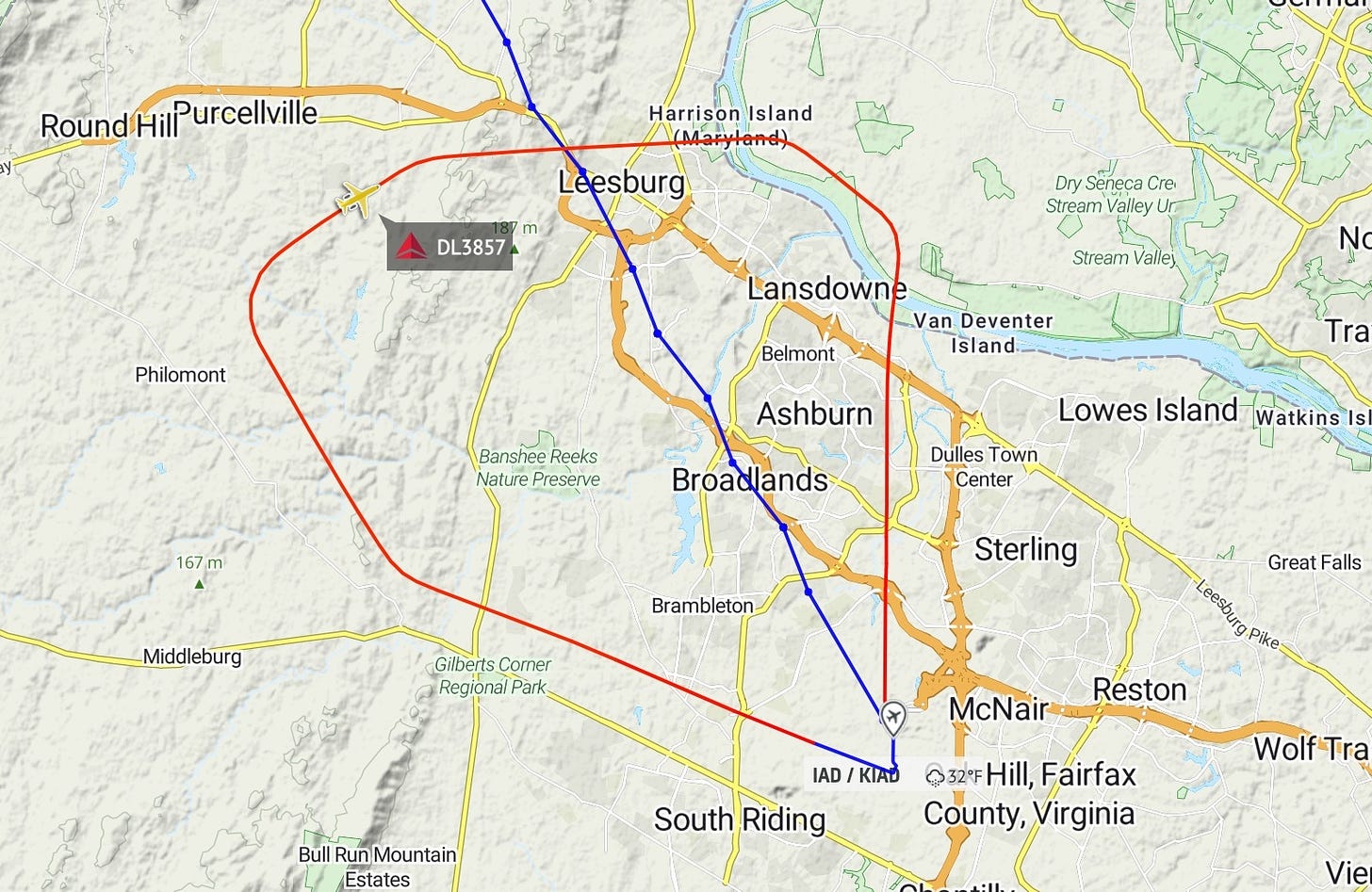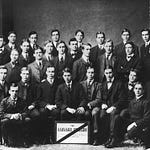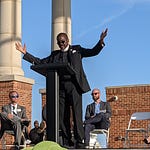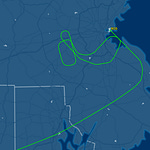
The purpose of this post is to let you hear a sample of the real-life workings of airline professionals, as they respond to what could have been a dangerous situation—and fortunately wasn’t. It’s a theme I’ve mentioned many times before, including here and here.
The 11 minutes and 45 seconds of the audio clip capture transmissions around Dulles airport this past Thursday, January 27, shortly after noon.1 Through the first eight minutes, you’ll hear a female controller working Dulles approach. These approach controllers guide planes just after they take off from Dulles (or nearby small airports like Leesburg), and just before they land.
Through the remaining time you hear a male controller from Dulles tower. Tower controllers give pilots “cleared for takeoff” instructions and direct them during the first stages of the climb away from the runway. Then they pass responsibility to the next controllers, called “approach” or “departure” depending which way the plane is going. Tower also clears planes for landing, and instructs them through the last minute or so before they touch down.
What happened
The minutes you’ll hear on the clip roughly match the plane’s journey along the red-line path, which it flew in a clockwise direction. I’m including a wider-view version of the map for orientation:
The summary of what happens is:
A commuter airline, “SkyWest 3857,” which passengers would think of as a Delta regional flight, takes off from Dulles, at the bottom point of the red-line pattern. It is headed for Minneapolis-St. Paul. Eventually its path was supposed to converge roughly with the blue line pointing up to the northwest, toward Minnesota. It’s normal for planes to be given an indirect course on their immediate routing away from a busy airport.
Very soon after takeoff, the flight crew finds a mechanical problem, apparently with the landing gear.
The crew asks for, and gets, clearance for an “emergency” return to Dulles, because they can’t safely continue the flight. The approach controller registers the emergency and instructs the crew on the series of right turns you see in red, bringing the plane back to Dulles a few minutes after it took off.
“Emergency,” in this sense, is a technical aviation term meaning that a plane gets priority over other traffic, because it needs to get on the ground without delay. It doesn’t necessarily imply that it is on fire, plummeting from the sky, or in other life-or-death peril.
Just before landing, the fight crew asks the tower controller to look out the window and confirm that the landing gear (wheels) have come down. The controller says they seem OK, and the plane lands without incident, damage, or injury.
Let’s go to the tape
Here are some guides to what you’ll hear, in the 11:45 segment above.
—For the first 30 seconds, the approach controller is handling routine traffic in and out. This is how things normally sound, and gives an idea of how much controllers must keep track of.
—Around time 0:30, you first hear “SkyWest 3857” check in. The pilot calmly says, “We’ve got a little maintenance situation here…”
—Around 0:55, after dealing with some other planes, the controller asks, “Any assistance required yet?” You’ll hear exchanges for a little while, and then some silence until around 2:00. [Update: As longtime aviation expert Bruce Williams points out in comments below, part of this “silence” was no doubt the controller responding on the other frequencies she was responsible for.]
—Around time 2:30, the controller starts directing (“vectoring”) the plane on its sequence of right-hand turns back to Dulles. You’ll notice throughout the clip the way she and her counterpart at Dulles tower deal with this plane’s problems while keeping track of many other flights.
—Between 2:50 and 5:00, you’ll hear the back-and-forth as the controller asks if the crew is declaring an emergency. The pilot says, purely matter-of-fact, “Yeah, we’ll go ahead and declare an emergency at this time.” Later the controller asks if the crew will need “the equipment.” That’s code for bringing fire trucks and rescue vehicles to the runway, in anticipation of a possible crash landing. The pilot says, similarly deadpan, “we’ll take the equipment.”
This is potentially serious, non-routine business. Pilot and controller alike understand the consequences of “rolling the equipment” and getting priority over other flights. But it needed to be done. Note the steady tone of all involved.
Also note the exchanges in this stretch beginning with the controller’s request, “Say souls on board.” That’s the official language for asking the total number of human beings on an aircraft. (My wife, Deb, the linguist, has written about the phrase here. While flying our propeller plane we have heard that phrase addressed to us exactly once, from a controller in upstate New York, during a storm, more than 20 years ago.)
—If you’ve gotten this far, you can follow the rest of the sequence. The pilot says he has “airport in sight.” The approach controller clears him for a “visual approach” and passes him to the tower controller, around time 8:15. The pilot checks in with Dulles tower (around 8:30) and asks for visual confirmation that his landing gear is in place (around 9:50). The tower controller clears the plane for landing; it touches down; and the drama is over. I assume that the passengers trudged back into the terminal, resigned to yet another case of travel inconvenience and delay. I don’t know what the pilot told them en route. But presumably most were unaware of the coordination over the airwaves and in the skies that had kept them all safe.
—The only stage business in this last part that might not be obvious is an exchange between Dulles Tower and a ground-crew team (“Ops 2”). They agree that as soon as the emergency-status inbound plane has touched down, they will declare the whole 11,500-foot runway closed. That’s because the fire trucks and rescue vehicles are poised, and no one knows what will happen when the plane arrives.
Doing their jobs, and working together
Quiet daily competence, in action. This is what it sounds like.
I’ve now taken about as long to explain the potential drama as it consumed in real time. For those who have ever been passengers—or have an interest in teamwork, or in the value of procedures, or in trained unflappability under pressure, or in the ability to handle many matters while focusing on one—I think you will find this clip revealing.
I have no idea who any of these people are. I know that they all did their jobs calmly, carefully, and very well.
I have prepared these clips from the feeds of ATC transmissions that are archived at LiveATCNet. I have often expressed my gratitude to the people who keep that site running for the service they provide.
The “approach” exchanges are here: https://archive.liveatc.net/kiad/KIAD-Departure-Jan-27-2022-1730Z.mp3 The “tower” exchanges are here: https://archive.liveatc.net/kiad/KIAD-Twr-1L-19R-12-30-Jan-27-2022-1730Z.mp3
I also thank several readers who wrote in to alert me to this event.













Share this post